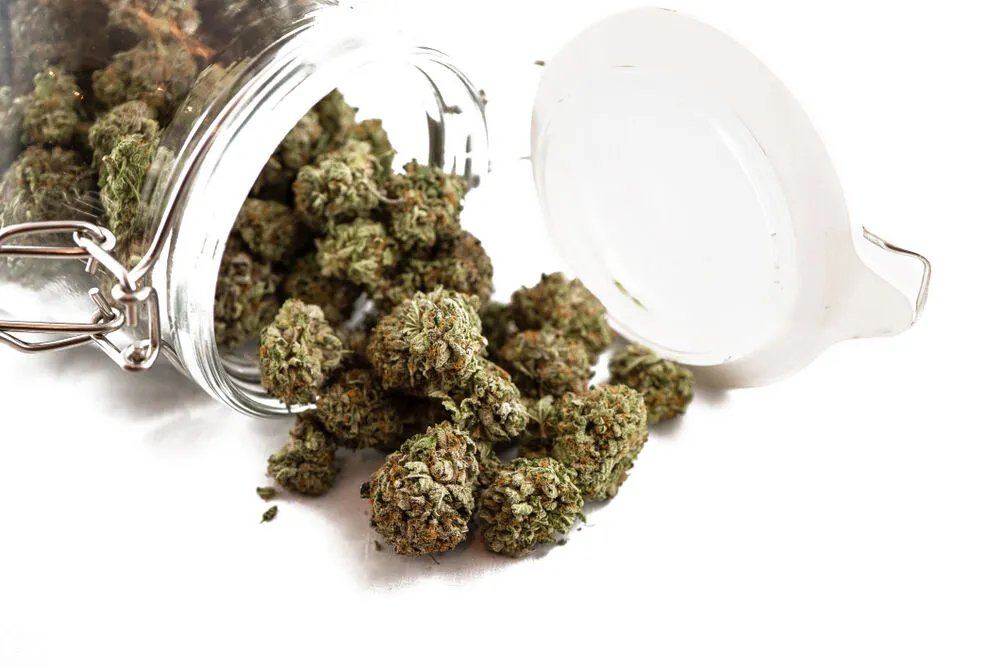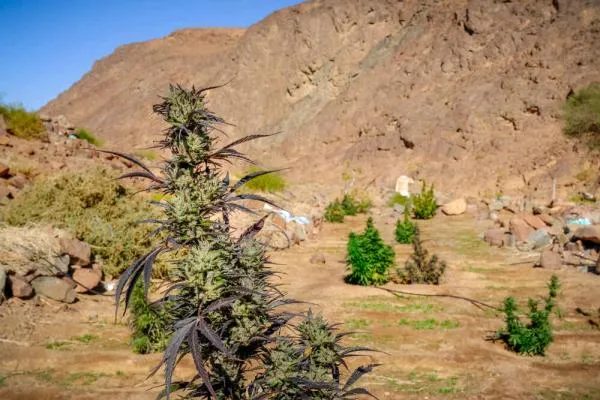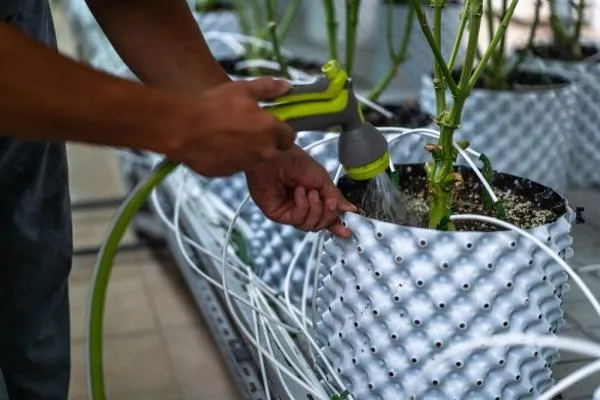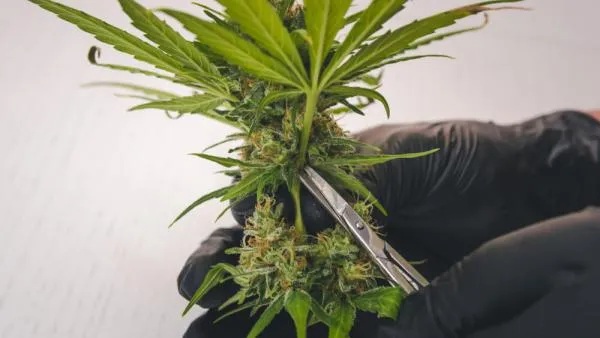Growing weed is meant to be a rewarding, relaxing, and even therapeutic endeavor. Few hobbies can match the satisfaction of cultivating your own top-shelf, high-quality cannabis. The process is equal parts art and science, offering a sense of accomplishment that’s hard to replicate. But when mold rears its ugly head, that satisfaction can turn into utter disappointment in an instant, especially if you don't catch it early enough.
Mold on marijuana usually presents as a light dusting or heavier spots of whitish fuzz, but it’s not always so obvious, with some forms of mold showing as darker gray or brown spots. It can also appear in shades of dark green or even black, blending in just enough to evade a casual glance.
And the risk doesn’t stop at live plants - dried and cured buds are also vulnerable. If you spot any fuzzy coatings or patches in shades of white, brown, black, or gray on your buds, it’s a clear sign to steer clear and dispose of them safely.
5 Things To Look Out For When Buying Weed From A Dispensary
- Discoloration: Look for unusual colors like white, gray, or black spots that may indicate mold growth. Healthy cannabis typically has vibrant green, orange, or purple tones.
- Fuzzy or Web-like Texture: Mold often appears as fuzzy patches or web-like structures on the buds. This is a clear sign of fungal contamination.
- Musty or Mildew Odor: Moldy weed emits a distinct smell, often compared to damp basements or old laundry. It’s different from the natural aroma of cannabis.
- Powdery Residue: If you see a fine, powdery substance on the buds, it could be mold spores rather than trichomes.
- Brittle or Overly Moist Texture: Mold thrives in improperly cured or stored weed. Buds that feel overly damp or crumble too easily may be affected.
Understanding Mold in Cannabis
What causes mold to grow on weed?
Environmental factors (high humidity, warmth, and poor airflow) are the three biggest contributors to mold growth in weed. These conditions create the perfect breeding ground for spores to germinate and spread, which can lead to full-blown issues in a matter of days.
But it's not just the external environment that can lead to mold growth. Mold spores are all around us, all of the time. They are just waiting for the right conditions to take root and grow. If you are growing indoors, the very first thing you need to do is to ensure that your grow room is kept clean, dry and well-ventilated.
Just a quick sanitizing and scrub down with a bleach solution once every few weeks can do wonders for keeping mold at bay. And of course, you need to check your weed babies regularly. This includes not just your plants but also the soil, roots, water, and the surfaces of your equipment.
Types of mold commonly found on cannabis
- Aspergillus is the most hazardous, appearing as dark green or black powdery patches. It produces harmful mycotoxins that can cause some heavy respiratory issues if inhaled.
- Botrytis, or bud rot, thrives in humid conditions, starting as white fuzz inside buds and turning gray or brown as it spreads.
- Penicillium appears as blue or green powdery growth, often caused by improper storage or drying. While less common, it can ruin weed quality and trigger allergic reactions.
- Root rot (Pythium) attacks the plant roots, making it hard to actually identify unless you know what to look for. By the time symptoms surface, it may be too late.
- Powdery Mildew is the most notorious, but also the easiest to spot, appearing as a white or gray powdery coating on leaves and buds. It's not dangerous to humans, but it can ruin your plants if left untreated.
- Fusarium is a soil-borne fungal pathogen that causes wilting, stunted growth, and root rot in cannabis plants, significantly reducing yields if untreated.
Health risks of moldy weed
For normal, healthy adults, smoking or vaping small amounts of moldy weed doesn't pose any significant health risks, but it's still not the best idea. If you have any respiratory conditions or a weakened immune system, it's best to steer clear completely.
But the real risk comes from smoking or consuming large amounts of moldy weed over an extended period. This can lead to a range of health issues, including respiratory infections and allergies. In severe cases, it can even cause lung damage or worsen existing conditions like asthma.
How mold will impact the quality and potency of your weed
That depends on how long the mold has been present and how much of it there is. If you catch it early and treat it properly, you should be able to salvage most of your weed. However, if the mold has been allowed to develop for an extended period, it can (and will) ruin your entire crop.
Mold can affect the taste, aroma, and potency of your weed. Moldy buds tend to have a musky, unpleasant smell and taste, even after being cured. As for potency, mold will cause the plant to focus on healing itself instead of producing cannabinoids, resulting in lower levels of THC and other beneficial compounds.
How to Identify Moldy Weed

Visual signs of mold on cannabis
Powdery Mildew, the most common form of mold on cannabis, is easy to spot. You'll see a white or gray powdery coating on leaves and buds, which can spread rapidly if not dealt with promptly.
Botrytis or bud rot, on the other hand, is a bit trickier to identify as it starts inside the buds themselves. You need to be checking your buds regularly, and if you notice any white/grey/brown patches on the inside of your bud, it's a sign that mold is taking over.
For root rot, you'll have to dig around in the soil and check for any slimy, discolored roots. This can be challenging to spot without experience, so it's best to prevent it from occurring in the first place by keeping your plants well-drained.
Identifying moldy weed vs trichomes

While trichomes and mold look pretty different, new growers do sometimes confuse clusters of trichomes for mold, but this is due to inexperience. Once you get used to checking your buds for mold, you'll be able to tell the difference.
It is not uncommon for trichomes to bunch up together and look like white or gray spots. But trichomes are sticky and resinous, whereas mold is powdery and can usually be wiped away.
How to spot moldy weed from its smell
If it has reached the point where mold is noticeable by its smell, chances are it has advanced significantly. Moldy cannabis has a damp, musty smell - think wet socks in a damp basement and completely different from the fresh, fruity, or skunky scents you expect from weed in the flowering stage of growth.
What Causes Mold To Grow On Weed
Factors contributing to mold growth in weed
The overwhelming majority of mold issues come from the temperature and humidity sitting in that mold 'goldilocks zone'. The optimal conditions for cannabis growth aren’t too far from the conditions that mold loves, and striking the right balance can be an issue. Letting your grow area cool perfecting the timing of the lights off period can help keep things under control.
Mold thrives in moist environments, and if the humidity level in your grow room or storage space creeps up too high, it creates a breeding ground for spores. Combine that with warm temperatures, and you’ve got the perfect recipe for a mold outbreak. Humidity levels above 65% are cause for concern. Try to keep it between 50-55% for veg, and 45-50% for flower growth and you should be okay.
Poor air circulation and lack of ventilation only exacerbates the as it traps excess moisture in your grow room or storage space, providing ideal conditions for mold to thrive. Spacing your plants out and investing in a good ventilation system will help prevent mold growth.
How harvesting and drying impact mold presence
Say you make it all the way through the grow, and your buds look perfect. But you go to check them out one day in the jar, and there's mold. What happened?
Well, chances are your buds weren't properly dry before you put them in the jar. Buds can feel pretty dry while still holding some moisture deep inside, and once you seal them in an airtight container, any remaining moisture can cause mold to grow.
It's a good idea to let them dry for a day or two longer than you think, just to be safe.
Role of storage conditions in mold development

Make sure your jars are clean and dry before storing your weed, as any residual moisture can also contribute to mold growth. Burp the jars daily for the first week or so after storage to release any built-up humidity and check for mold regularly.
And make sure that the jars are stored in a cool, dark, dry place.
Preventing Mold on Cannabis While Growing It
As with most weed related issues, prevention is the best cure. Here are some tips to help prevent mold from growing on your cannabis plants:
- Regularly check your plants for signs of mold and remove any affected areas immediately.
- Maintain proper ventilation and air circulation in your grow room.
- Keep an eye on the temps and humidity and let your grow space cool off overnight or while the lights are off.
- Properly dry your buds before storing them in airtight containers
- Store jars of weed in a cool, dark, and dry place.
- Remember weed can expire and after about 6 months of storage it will begin to decline in quality.
What to Do if You Spot Mold On Your Weed
How to check for mold before smoking
If you have just bought a bag of buds that you suspect may be moldy, the first thing to do is break one all of the buds. If anything looks off, get rid of it. Will it still get you feeling good? Yeah, the THC and all the other goodies are still there. But is it worth the risk of possibly inhaling mold spores? Probably not.
Steps for safe disposal of moldy weed
The golden rule is as far away from your grow area as possible. Mold spores can travel through the air very easily, so you don't want to risk contaminating your new crop.
Can you clean mold off weed?
That depends on the type of mold...
- Powdery Mildew can be wiped away from leaves with a damp cloth or paper towel. But if it has taken hold of the buds, it's best to throw them out.
- Botrytis or bud rot is not something you can clean off and should be disposed of.
- Root rot, unfortunately, cannot be cleaned off the roots. If caught early enough, you may be able to save the plant but don't hold your breath.










